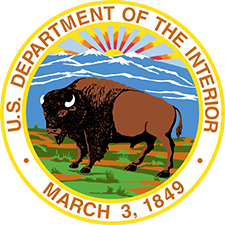The BIE implements federal Indian education programs for roughly 46,000 students at 183 schools across the United States. Quality instruction and safe facilities empowers the next generation of Native American leadership and remains an important and top priority for Indian Affairs. To strengthen instruction delivery and facilities improvement, Indian Affairs has taken several crucial steps to empower the BIE.
The Coronavirus (COVID-19) is challenging tribal governments and BIE-funded schools on a scale not experienced in decades. Our BIE team is fully committed to finding a path forward through these challenging times to provide the educational services BIE students need as well as support to students and their families as well as staff. The BIE is continuing its collaboration with tribes, states, local health officials and our federal partners for a safe school reopening, and it's Return To Learn! plan provides the guidance needed for both in-classroom and online learning. Return To Learn! provides guidance on reopening criteria that follows current Centers for Disease Control and Prevention (CDC) recommendations, provides flexibility for local conditions, and makes recommendations on distance learning platforms.
The BIB-operated K-12 day-school operations across the United States had a uniform start date of September 16 for the 2020-2021 school year. In addition, off-reservation boarding schools and dormitories were authorized to provide day-school instruction-only, with distance-learning options for students who are not able to attend in person. To that end, BIE has awarded over
1,200 teacher laptops, over 10,400 student laptops, over 6,300 Kajeet jetpacks, and over 1,300 iPads.
BIE Budget Separation.
As I reported last year, soon after taking office I tasked BIA and BIE with providing me detailed administrative process maps. I was concerned with how cumbersome the procedures were for implementing simple yet critical operations for maintaining our BIE schools. It became clear that we needed to empower BIE to manage its own operations to better serve the unique needs of our students and allow BIA to focus on its own service-based requirements. The fiscal year 2020 budget for the first time separated BIE's and BIA's budgets, increasing BIE's transparency, accountability and separating Congressional justification for each of the two organizations. The net effect is that BIE will gradually assume direct responsibility for acquisition, safety and facilities management.
I am also proud to report that Indian Affairs finalized a standard operating procedure for funding requests to address facility needs. Further BIE will deliver quarterly safety inspection reports to Indian Affairs to more regularly monitor conditions.
School Accountability, Assessments and Standards.
In April 2020 a new BIE rule took effect establishing a single, uniform accountability system for standards and assessments across BIE schools.1 For the first time, BIE now has a unified system of requirements for a high-quality education for both BIE-funded schools and the students served by such schools. The rule also reaffirms the right of tribes to use Native American languages as a medium of instruction. It is the intent of this rule to provide simplicity, certainty, clarity, and consistency for the 174 BIE-funded schools and the students, parents, school administrators, tribes, and Indian communities served by those schools.
Johnson-O'Malley Act Education Contracts.
In March 2020 a new BIE rule took effect clarifying the eligibility requirements for Indian students to receive benefits under the Johnson-O'Malley (JOM) Act. The JOM Act authorizes the Secretary, tribes, and tribal organizations to enter contracts with states, schools, and private nonsectarian organizations to use appropriated funds in support of Indian students under such contracts. The BIE's new rule updated rules that had been in place for over 40 years without substantial changes. The new rule updates the BIE's existing rules to implement the JOM Act and its amendments by the JOM Supplemental Indian Education Program Modernization Act of 2018. In doing so, the rule clarifies the funding formula and process to ensure full participation of contracting parties, and otherwise reconciles and modernizes the regulations to comport with the activities of contracting parties under the JOM Modernization Act.2
1 85 Fed. Reg. 17009 (Mar. 26, 2020).
2 85 Fed. Reg. 10938 (Feb. 25, 2020).
Education Space Criteria, Learning Platforms and Digital Modernization.
In May 2020 Indian Affairs released a new Education Space Criteria Handbook, 80 1AM 2-H, to replace one that had been in effect since 2005. The Handbook provides a standard method for evaluating space-planning criteria for BIE school facilities. To ensure that core instructional requirements are incorporated with functional space needs, the Handbook sets forth methodologies for establishing minimum requirements for new construction and for determining the modifications and upgrades that are needed to upgrade existing schools to meet core education functional requirements. The BIE is focused on creating consistency across Bureau Operated Schools through standardizing learning platforms. This organized effort will also include training across locations for teachers, students and parents. In addition, BIE continues to modernize each location's digital infrastructure on-site at each school location.
Section 105(1) Leases.
This year Indian Affairs conducted listening sessions to provide tribal leaders with information on agreements under Section 105(/) of the Indian Self-Determination and Education Assistance Act. Section 105(/) allows tribes and tribal organizations with self-determination contracts or self-governance compacts to enter into a lease with the Department for tribally owned or rented facilities used to carry out those functions. I am proud to report that since July 2019, the Department has approved the first three 105(/) lease agreements with the Gila River Indian Community, the Red Lake Band of Chippewa Indians, and, most recently, with the Mashantucket Pequot Tribal Nation.


